Search Engine Optimization has changed a great deal over the years and will continue to do so as new algorithms are implemented. With so many changes, it can be easy to fall into some of the traps that SEO myths leave behind. There are many resources out there that contradict each other in regard to what the best SEO practices are. For business owners, it is crucial that you do not fall victim to these SEO myths. It will not only have a negative impact on your website, but it could hinder the overall success of your business. Here is a list of eight common SEO myths that you should leave behind in 2017.
Myth 1: Link Quantity is More Important than Link Quality
Linking building is one of the most important factors that Google takes into account for it’s ranking algorithms. Before, the focus was on getting as many links as possible back to your site. The more links you acquired, the higher your website’s ranking would be. However, updates to Google’s algorithms over the years have changed this. Today, your link building strategy should be completely different. You should no longer try to get as many links as possible with a total disregard for where the links are coming from. The qualtity of the links you’re acquiring is the most important factor for link building. Focus only on relevant links for your company.
Instead of spending most of your time finding irrelevant links, spend more time creating quality content. With quality content on your site, it will be easier for you to obtain backlinks from sites with a high domain authority. The higher the domain authority of a site, the more Google will trust that site. So, in short, it would be more beneficial to have 10 backlinks from high authority sites than it would to have 30 backlinks from low authority sites.
Myth 2: HTTPS Is Not Important for SEO
Recently, you may have noticed that some website’s URLs start with “HTTPS” instead of “HTTP”. That “S” that has been added to some sites means that the site is securely encrypted to prevent hackers from obtaining any of your data. The technology used to do this is called SSL, which means Secure Sockets Layer.
Having an SSL certificate for your site is important for a couple reasons. One, it ensures that all of the data on your site is secure. And two, it will prevent users from being scared off your site. When a website does not have an SSL, it will be labeled as “Not Secure”. This informs users that the information they enter on your site is at risk of being captured by hackers. This can be especially detrimental for e-commerce sites that have users input their credit card information. To ensure that users will continue to visit and make purchases on your website, it is crucial to acquire an SSL.
 Myth 3: Exact Match Keywords Are Crucial for SEO
Myth 3: Exact Match Keywords Are Crucial for SEO
In the past, it used to be very important to use exact matches of your keywords within the content on your site. However, machine-learning algorithms like RankBrain can now understand the intent behind the keywords you use. This means you should focus on the user experience when creating content on your site. Instead of trying to stuff keywords into awkward sounding sentences, use a conversational tone that will appeal to the user. With the help of artificial intelligence, Google will be able to pick up on synonyms or similar phrases that pertain to your keywords and it will understand the intent behind your content.
Myth 4: Pop-Ups Always Hurt Your Ranking
Creating a good user experience for website visitors is an important ranking factor for your site. A long-standing SEO myth is if you use pop-ups, it can have a negative effect on your website’s ranking. However, that is only the case for intrusive or unnecessary pop-ups. An example of an intrusive pop-up is one that interrupts the user’s interaction with the rest of your site, like if the pop-up were to cover the entire screen.
When used correctly, pop-ups can be beneficial for your website and its visitors. Having a chatbot pop-up in the lower right-hand corner of your site when visitors first arrive is an example of a good pop-up. It doesn’t interrupt their interactions with your site and it provides them with value by giving them a quick and easy way to reach out for any questions they may have. Pop-ups like this can help to improve the user experience and create leads for your business.
Myth 5: Local SEO Is Not a Factor Anymore
Ignore anyone who tells you that local SEO is not an important ranking factor, especially if you’re a local business. For small local businesses, local SEO will not only help customers find you, but it will help the RIGHT customers find you. Using local SEO will expose your business to the people who live or work within your target market. These are the people who are the most likely to use your services or buy your product. If you don’t implement local SEO, you’ll be wasting time trying to attract customers who are nowhere near your target market and who will most likely never encounter your business.
Myth 6: Image Optimization is Unnecessary
This used to be true. Images did not always require optimization in order to increase your page’s ranking or relevance. But now that on-page SEO is more important than ever, not optimizing your images will hinder your website’s SEO. The best way to optimize your images is to add alt text to them. Search engines do not recognize images by themselves when crawling your site. Adding alt text and a relevant file name will inform search engines about what the image is. Use relevant keywords for both the alt text and the file name to help boost your on-page SEO.
Myth 7: Positive User Experience Is a Bonus, Not a Requirement
As it was mentioned before, creating a good user experience is key to rising in the rankings. There are few things that you should focus on in regard to the user experience on your website. Always be aware of your website’s load time and bounce rate. If your site has a bad bounce rate, it could be due to a slow load time. When users conduct a search, they want information quickly. If your site doesn’t load within 5 seconds, there’s a good chance the user will go back and click on a different site.
You also want to make sure that your site’s layout is easy to navigate and has clear calls to action. An unorganized site can easily frustrate visitors because they won’t be able to find what they’re looking for. Make sure your site is well organized with relevant content for your visitors.
 Myth 8: You Don’t Need Mobile Optimization
Myth 8: You Don’t Need Mobile Optimization
Take a look around you when you’re in a public place and you’ll see many people looking down at their phone. The evolution of the smartphone has made mobile optimization one of the most important ranking factors for any business’s website. And in 2016, Google made it very clear how just how important it was when they split their search index in two. This split gave priority to searches conducted from a mobile device. Check to make sure your site is mobile-friendly. If it isn’t, your rankings will suffer.
Leave These SEO Myths in the Dust
Now that you know the SEO myths to ignore in the new year, it’s time to start optimizing your site. Creative Click Media is a digital marketing company that specializes in search engine optimization. From Web Design to Local SEO, we offer a variety of services that can help your website rise in search engine rankings. If you think your website is in need of optimization, reach out to us today!


 Myth 3: Exact Match Keywords Are Crucial for SEO
Myth 3: Exact Match Keywords Are Crucial for SEO Myth 8: You Don’t Need Mobile Optimization
Myth 8: You Don’t Need Mobile Optimization

